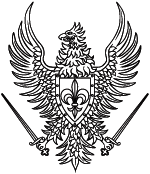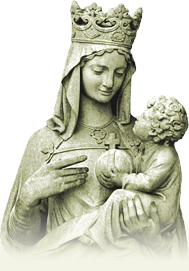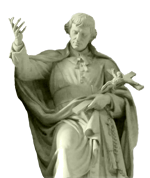Church
The Collapse of the Church in the West: 1960-2000
Father G.H. Duggan S.M.*
philosopher-theologian.
He writes from New Zealand.
It is a fact, now evident to everyone, that the Church in the West - that is, the countries of Western Europe, the United States, Canada, Australia, New Zealand - has in recent decades suffered a severe setback; severe enough to call it a collapse.
Since no one has invented an agapometer to measure the degree of spiritual fervour in the hearts of the faithful, our only means of measuring the extent of the collapse is statistics and the statistics show clearly that the collapse is real.
In his book The Battle for the American Church, the historian Monsignor George A. Kelly, has the figures up to 1979 for the Church in the United States. They were then horrendous and there has not been any improvement in the intervening years. Nor is the statistical picture notably different in the other countries that, with the United States, constitute the West.
Here are some of Kelly’s statistics:
In 1950, there were 60,000 priests, with 25,000 seminarians in training for the priesthood and, religious engaged in teaching numbered 150,000.
The religious behaviour of Catholics was exemplary:
75% of married Catholics attended Mass every Sunday;
50% received Communion at least monthly;
85% made their Easter duty;
85% of single people went to Mass every Sunday, whatever their age – 19, 29, 39, 49 etc.
In 1979, the picture was very different. Perhaps as many as 10,000,000 Catholics had stopped regular attendance at Sunday Mass - a decline of 30%. A once proud Catholic school system is down at least 2,000,000 in enrolments; the number of babies baptised has dropped by nearly 500,000; there are almost 50,000 fewer converts, annually.
There has been a great change in outlook also. A survey in 1976 showed that 75% approved of sexual intercourse for engaged couples; 80% approved of contraception; 70% approved of legalised abortion; 40% did not think the Pope is infallible.
The drop in the number of religious Sisters since is staggering. In that year (1965) , they numbered 185,000. In 1995 they numbered 80,000.
The statistics for the other countries of the West are not very different. Sunday Mass attendance has fallen drastically. So has the number of vocations to the priesthood and the religious life, so that once-crowded seminaries and novitiates have been sold or diverted to other purposes.
The Causes of the Collapse
The French have a proverb, Maritain has reported, that when a fish corrupts, the rot begins in the head. So in seeking to understand the collapse, we must look first for causes of the intellectual order, and these are not hard to find. They form a conglomeration of grave theological, philosophical and biblical errors that has been given, quite appropriately, the name of Neo-Modernism.
This, like its predecessor, Modernism, which was crushed by Pope St. Pius X at the beginning of the 20th century, aimed at effecting radical changes in the teaching of the Church, without leaving the Church, in order to bring the Catholic Faith into conformity with the dominant ideology of the modern world.
Pope St. Pius identified the intellectual roots of Modernism as the gnosticism of Kant, the Evolutionism of Hegel, and the Rationalist biblical criticism of Strauss and Renan.
The predominant streams of thought in Neo-Modernism are the Kantian Existentialism of Karl Rahner, the Evolutionary Pantheism of Teilhard de Chardin, who doubtless owed an unacknowledged debt to Bergson, and the Existentialist exegesis of Rudolf Bultmann, which influenced the "scientific" biblical work of Raymond Brown and others.
The Neo-Modernists have been far more successful than their Modernist predecessors.
Teilhard
Teilhard stated his objective in a letter to Leontine Zante in 1936 :
"What increasingly dominates my interest is the effort to establish within myself and to diffuse around me a new religion (let’s call it an improved Christianity if you like) whose personal God is no longer the great neolithic landowner of times gone by, but the Soul of the world..."
In 1947 he had won so many disciples to his cause that he could write: "I have got so many friends in good strategic positions that I feel quite safe about the future."
In 1950, after the appearance of the encyclical Humani generis which contained a very explicit condemnation of Teilhard’s theories, he received a letter from a former Domininican who had left the Church, inviting him to join him in his campaign. Teilhard declined the invitation. He would, he wrote, remain in the Church, which obviously had a central place on the evolutionary drive which was carrying the universe to Omega Point, where the process of unification will be complete.
Denying the Real Presence and the Immortal Soul
Other Neo-Modernists have been less explicit about their aims. But it is clear that Rahner sought to bring the teaching of the Church into harmony with the Kantian Existentialism of Martin Heidegger. The objective of the theologian, according to Edward Schillebeeckx, must be to expound the Faith using concepts derived from the Phenomenology of Edmund Husserl. For Raymond Brown, the task of the Cathollic biblical scholar is to expound the meaning of the Scriptural text using the historical-critical method so as make his work acceptable to the other scholars in the same field.
The Council of Trent defined that "in the precious sacrament of the holy Eucharist, after the consecration of the bread and wine, our Lord Jesus Christ, true God and true man, is truly, really and substantially contained under the species of these sensible things" and the Council added, "by the consecration of the bread and wine a conversion is made of the whole substance of the bread into the substance of the body of Christ our Lord and of the whole substance of the wine into the substance of his blood; which conversion is suitably and properly called by the holy Catholic Church transubstantiation. "
Rahner and Schillebeeckx both rejected this doctrine of Transubstantiation on the ground that the Council in defining it had used medieval philosophical notions which are now obsolete. Christ is present, Rahner held, by Transfinalisation: the bread is being used for a supernatural purpose, no longer for a natural one. Schillebeeckx put forward Transignification: the bread has been given a symbolic significance it did not previously possess.
In 1965 Pope Paul VI issued his encyclical Mysterium Fidei, in which he rejected these theories as false (in fact they are heretical), and dismissed the notion that St. Thomas’s philosophy is obsolete, as garbage. He named no names and did not demand any retractions. The notions which the Council employed in its definition of Transubstantiation, the Pope wrote, "are concepts which are not tied to any specified cultural system. They are not fixed to any specified development of the sciences nor to one or other of the philosophical schools. They represent the perception which the human mind acquires from its universal essential experience of reality, and expresses by the use of appropriate and certain terms borrowed from colloquial or literary language. They are, therefore, within the reach of everyone, at all times and in all places." [par. 24]
The false (and indeed heretical) theories of Rahner and Schillebeeckx regarding the Eucharist have been widely diffused, with devastating results, not only among the ordinary faithful.
Père Marie-Elis Boismard, O.P., a prominent member of the staff of the Ecole Biblique, Jerusalem, ended his book Jésus, un homme de Nazareth, published in 1996, with an excursus of 21 pages on the Eucharist (pp. 189-210). He explicitly rejects the doctrine of Transubstantiation in several places. For example, he writes "The bread is not changed physically into the Body of Christ, but remains what it has always been: bread. We remain, therefore, on the level of the symbol." (In support of this thesis he cites his confrere Schillebeeckx’s argument that the language used by the Council of Trent is now obsolete).
In 1513, the Church, in the Fifth Council of Lateran, defined against the neo-Averroists (Pomponazzi - d.1525 - and others) that the human soul is immortal, in these terms: "Although man’s intellective or rational soul is essentially (per se et essentialiter) the form of the human body, it is nevertheless immortal."
Rahner rejected this definition on the ground that it employed notions that were developed in the Middle Ages but are now obsolete. He held, that the human soul must always be joined to some sort of body - after death, perhaps the universe - and that the notion of a "separate soul" to which St. Thomas devoted a whole Question of his Summa (I. q; 89) is no longer tenable. It could well be this theory of Rahner’s that led Xavier Leon-Dufour to put forward his extravagant account of the Resurrection of Christ: that the mortal body was annihilated and the glorious body created in the next instant to take its place. On Easter Sunday, 1971, the French hierarchy issued a pastoral letter in which they declared that the identity of the risen body with the mortal body is an article of faith. In the next edition of his book, Leon-Dufour tried, not very successfully, to bring his text into harmony with the Faith.
Rahner may also be responsible for some weaknesses in the new liturgy for the souls of the dead, with its emphasis on the resurrection of the body.
The Catechetical Revolution
Until the 1960s catechesis was primarily doctrinal - an accurate account of the truths revealed by God and entrusted for safe keeping and accurate exposition to the Catholic Church.
The term for this in the early Church was didache, which was the instruction given to converts to the Faith before they received the Sacrament of Baptism. There is some evidence that it was expressed in a set form of words and was learned by heart, as was the practice in Rabbinic Judaism. We seem to have traces of this in the First Letter to the Corinthians, in which St Paul reminds his readers of what he had taught them regarding the Holy Eucharist and the Resurrection of Our Lord (ch 11 and l5). It may be what is meant by "the form of sound words," of which the Apostle speaks in his First Letter to Timothy ( 6:4). Later the content of the Faith was summed up in the Apostles Creed which the neophyte recited before receiving the Sacrament of Baptism.
Later still, the whole content of the Church’s teaching was divided into four parts: Creed, Commandments, Sacraments and Prayer and this division has been accepted in the recent Catechism of The Catholic Church, published in 1991.
In the 19th century there were the Baltimore Catechism used in schools in the United States and the so-called Penny Cathechism, authorised for use in schools by the Bishops of England and Wales. Given to G.K. Chesterton by the parish priest when G.K.C. approached him about entering the Catholic Church, the great thinker described the little booklet as "a marvellous compendium of Christian wisdom. "
This doctrinal catechesis and the books which embodied it were discarded in the 1960s in favour of a new catechetical method called experiential. This had as its starting-point the religious experience of the child, the result of the indwelling of the Holy Spirit, one of the effects of the reception of the Sacrament of Baptism.
In 1983, on a visit to France, Cardinal Ratzinger described the abandonment of the catechism as a bad blunder. With good reason. For as a result of the use of the new catechetical method, several generations of Catholics have grown up ignorant of the content of the Faith.
The agents responsable for this change were the catechetical experts, who were listened to respectfully by their respective bishops. Many were graduates of catechetical insitutes such as Lumen Vitae in Brussels, headed by Fr. Van Caster, S.J., and the East Asia Pastoral Institute, in Manila, headed by Fr. Nebreda, S.J. To determine to what extent these and similar institutions had adopted the the Existentialist theology of Karl Rahner one would have to scrutinise their curricula. This I have not been able to do but contact with some of their graduates made it clear that their courses owed much to the influence of Rahner.
In his aforementioned book, Monsignor George A. Kelly has a chapter entitled "The Battle for the Catholic Child, or Psychology vs. Parents" (pp.237-252) in which he discusses those controlling religious education in the United States. Those in control of education, such as the staffs of teachers’ training colleges, took their cue from such thinkers as Gabriel Moran, Mario von Galli, S.J., Walter Imbiorski, Jean Piaget and Lawrence Kohlberg. Kelly sums up the result of the new catechetical approach thus: "The net result is a heightened sense of self-appreciation and autonomy in the student, without necessarily a knowledge of Catholic doctrine or felt obligation to the Church and its requirements."
The Moral Collapse
There is plenty of evidence that there has been a sharp, decline in the behaviour of Catholics especially in matters of sex, over the past 50 years. The main cause is false teaching, propounded by such Neo-Moderrnsts as Fr. Karl Rahner, S.J., Fr.Bernard Haering, C..S.R., in Europe, Fr. Charles Curran, who taught moral theology for 20 years at the Catholic University in Washington and Fr. Richard McCormick, S.J., who for many years did the Moral Notes in the learned journal Theological Studies. Their views were echoed in such influential journals as the London Tablet, America and Commonweal.
These all rejected Pope Paul VI’s condemnation of contraception in his encyclical Humanae Vitae published in 1968. Many argued that because the Pope did not explicitly invoke his prerogative of personal infallibilty, the teaching was non-infallible, and therefore one could, for serious reasons, decide not to follow it. Rahner indeed dismissed the Pope’s argument from natural law as worthless, because it assumed that human nature does not change, whereas, like every biological entity it is subject to evolution (as his confrere Fr Teilhard de Chardin had shown).
In fact, the Pope had no need to invoke his infallible authority because, as John T. Noonan has shown in his authoritative work Contraception, the Church has from earliest times condemned contraception as gravely sinful.
Ten national hierarchies - eight in Western Europe, Canada and Indonesia, taking their cue not from the Pope but from the Neo-Modernist theologians, declared that individual Catholic married couples were free, if they conscientiously judged that the circumstances warranted it, to use a contraceptive. Not surprisingly, the birth-rate in Western Europe dropped still further and for some time now has been below the level required to maintain a stable population.
The issue of sexual morals came to a head in spectacular fashion in the United States in 1977, with the publication of a book entitled Human Sexuality. Commissioned by the Catholic Theological Society of America, it was written by five members of the Society and was, in the words of George A. Kelly, "the most outspoken contradiction of the Catholic moral code by Catholic theologians in the recent history of the American Church." With eleven direct quotations from the text, he amply justifies this scathing judgement. The book allows contraception, of course, but also direct sterilisation, adultery, pre-marital intercourse, homosexual relationships, masturbation and bestiality - in certain circumstances.
The American bishops did condemn the book, but the language was very mild and in their official publication Origins they remarlkd that the book 'is likely to elicit a strong reaction in the Church from those who believe that it contradicts official Church teaching [the italics are Kelly's].
Kelly then goes on to report on other moral issues in which the bishops lost the battle, and he concludes: "Thus was completed the rout of the Amercian bishops by their young theologians, a defeat whose impact has been felt in the Catholic Church until this day." He wrote those words in 1979. Twenty-four years later we are witnessing the fulfilment of that grim prophecy.
The Liturgical Revolution
The Second Vatican Council’s Constitution on the Sacred Liturgy (Sacrosanctum Concilium) was approved by an overwhelming majority of votes on December 4, 1963. It decreed:
"In order that the Christian people may more certainly derive an abundance of grace from the liturgy, holy Mother Church desires to undertake, with great care, a general restoration of the liturgy itself. For the liturgy is made up of an unchangeable element, divinely instituted, and of elements subject to change. The latter not only may be changed, but ought to be changed, if, with the passage of time, they have suffered from the intrusion of anything out of harmony with the inner nature of the liturgy, or have become less suitable." (n.21)
After the Council, an organisation was created, the Consilium for the Implementation of the Constitution on the Liturgy. It was headed by Monsignor Annibale Bugnini, C.M., an acknowledged expert on the liturgy, and contained other experts on the Roman Rite and on the Rites of the Catholic Eastern Rites. To these were added six Protestant "observers," one of whom was Max Thurian, who later became a Catholic. These "observers" took no part in the formal sessions of the Consilium, but it is certain that they exercised some influence informally.
Monsignor Bugnini, who was later made an Archbishop [and who, according to hard evidence made known to Fr. Paul Crane, was certainly a Mason – Ed.], was the main architect of the Novus Ordo of the Mass which was promulgated by Pope Paul VI in 1969.
This was a revolutionary change, without precedent in the history of the liturgy. It is a new liturgy, and goes far beyond what the great majority of the Council Fathers envisaged when they voted for the Constitution Sacrosanctum Concilium six years before, as many of them have testified.
Instead of one Canon of the Mass, there are four. The Roman Canon has survived only because the Pope intervened to forbid its elimination. Several of the accompanying prayers in which there was an explicit mention of the Mass as a sacrifice were eliminated, as they were Carolingian intrusions and had been in use for a mere 1,000 years. The second Canon, wrongly attributed to the third century martyr St. Theophilus, is very brief, and when it was used before a group of bishops during the Council, several dismissed it as a "minimass."
Pope Paul and Bugnini were confident that the New Order of Mass would be a success, attracting more of the faithful to assist at the Holy Sacrifice and helping to bring non-Catholics into the Church. As is now abundantly evident, things have turned out differently. In recent times Cardinal Ratzinger has frankly admitted this, and indeed that the New Mass is a contibuting factor to the present crisis in the Church.
The Cardinal wrote:
"I am convinced that the present crisis that we are experiencing in the Church today is to a large extent due to the disorientation of the liturgy - in that it is a matter of indifference whether God exists and whether or not he speaks to us or hears us. But when the community of faith, the worldwide unity of the Church and her history and the mystery of the living Christ are no longer visible in the liturgy, where else, then, is the Church to become a visible essence? Then the community is offering itself, an activity that is utterly fruitless."
The Novus Ordo imposed by papal authority is of course a valid rite and, celebrated reverently, can be edifying. But there cannot be much doubt that the magnitude of the change encouraged a number of people to imagine that further developments were legitimate. So we came to have "rock Masses," "Charismatic Masses," "clown Masses" and so forth; young women in leotards performing a ritual dance, as in Hindu worship, etc. etc. The permission to use the vernacular throughout the Mass led to the imposition of the banal and often inaccurate translations provided by the ICEL, and so forth.
Conclusion
The collapse of the Church in the West has greatly weakened the whole Church in her never-ending conflict with the world. The road to recovery will be long and arduous. The principal means, and the most effective, at the disposal of the individual Catholic to hasten the dawn of a brighter day are, as always, prayer and sacrifice.
Father Duggan is a distinguished philosopher-theologian. He writes from New Zealand.
Para citar este texto:
"The Collapse of the Church in the West: 1960-2000"
MONTFORT Associação Cultural
http://www.montfort.org.br/eng/veritas/igreja/colapso_da_igreja/
Online, 02/07/2025 às 19:38:55h








